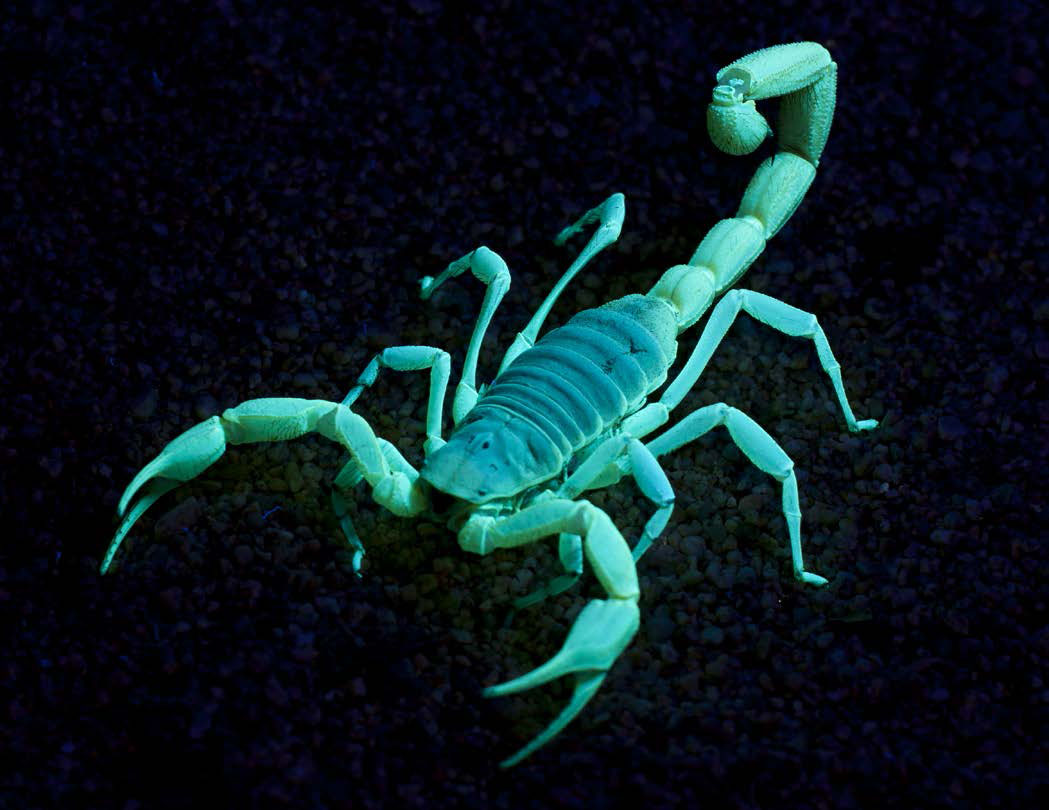Most scorpions glow a blue-green color when illuminated by ultraviolet (UV) light or natural moonlight. Scientists aren’t sure how this fluorescence benefits the creatures, but some have speculated that it acts as a sunscreen, or helps them find mates in the dark. Now, researchers have identified a new fluorescent compound from scorpion exoskeletons. The team says that the compound could save to protect these arachnids from parasites.
More than 60 years ago, scientists first recognised scorpions’ propensity to glow under UV light. Until now, only two fluorescent compounds, β-carboline and 7-hydroxy-4-methylcoumarin, had been identified in scorpions’ hard outer shell, or exoskeleton. Masahiro Miyashita and colleagues wondered if there might be other fluorescent molecules with different chemical properties that were missed in previous studies.

A giant desert hairy scorpion (Hadrurus arizonensis) fluoresces under UV light.
Photo courtesy Edvard Mizsei/
www.shutterstock.com